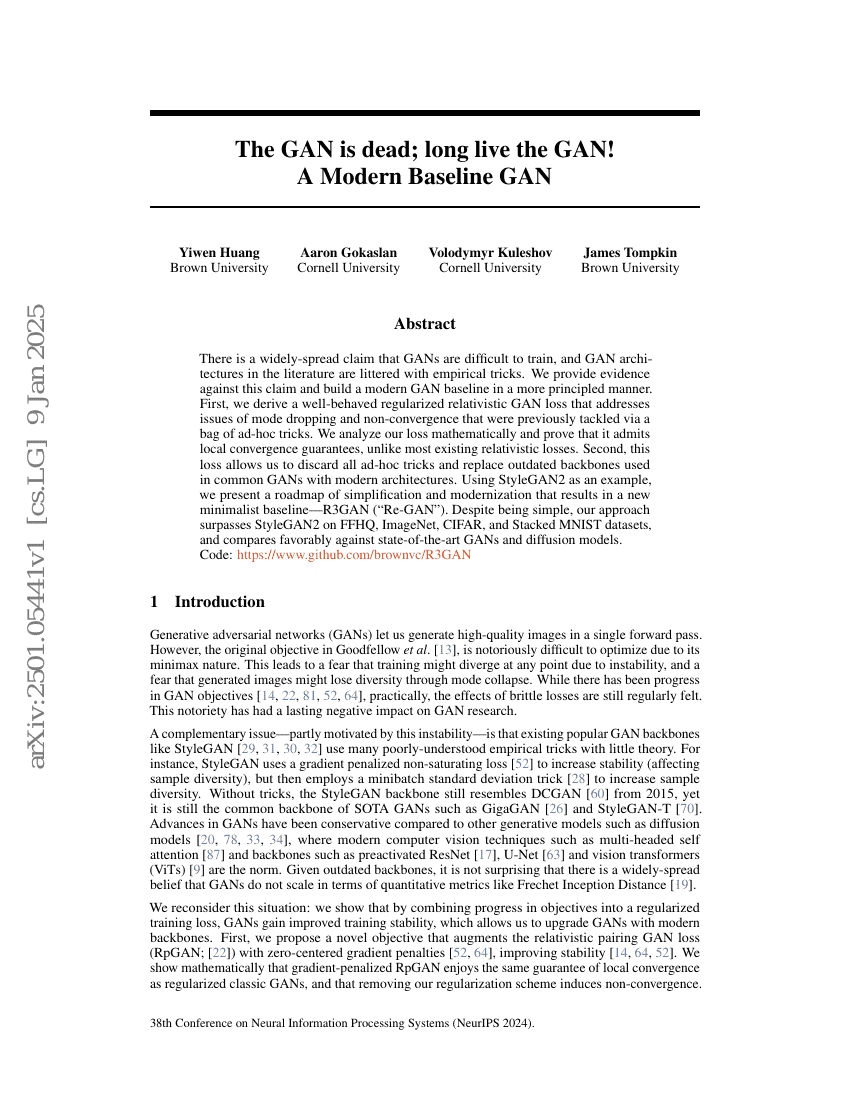Command Palette
Search for a command to run...
Yiwen Huang Aaron Gokaslan Volodymyr Kuleshov James Tompkin

Abstract
There is a widely-spread claim that GANs are difficult to train, and GANarchitectures in the literature are littered with empirical tricks. We provideevidence against this claim and build a modern GAN baseline in a moreprincipled manner. First, we derive a well-behaved regularized relativistic GANloss that addresses issues of mode dropping and non-convergence that werepreviously tackled via a bag of ad-hoc tricks. We analyze our lossmathematically and prove that it admits local convergence guarantees, unlikemost existing relativistic losses. Second, our new loss allows us to discardall ad-hoc tricks and replace outdated backbones used in common GANs withmodern architectures. Using StyleGAN2 as an example, we present a roadmap ofsimplification and modernization that results in a new minimalist baseline --R3GAN. Despite being simple, our approach surpasses StyleGAN2 on FFHQ,ImageNet, CIFAR, and Stacked MNIST datasets, and compares favorably againststate-of-the-art GANs and diffusion models.
Code Repositories
Benchmarks
| Benchmark | Methodology | Metrics |
|---|---|---|
| image-generation-on-cifar-10 | R3GAN | FID: 1.96 |
| image-generation-on-ffhq-256-x-256 | R3GAN | FID: 2.75 |
| image-generation-on-imagenet-32x32 | R3GAN | FID: 1.27 |
Build AI with AI
From idea to launch — accelerate your AI development with free AI co-coding, out-of-the-box environment and best price of GPUs.